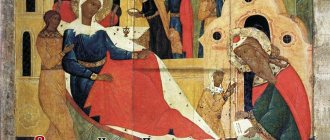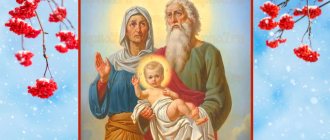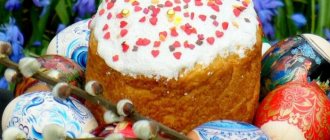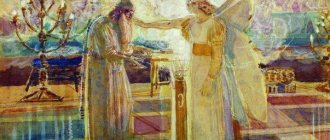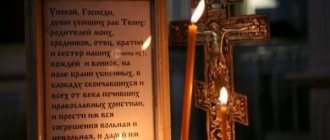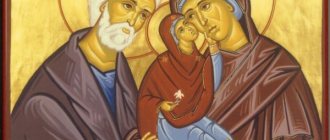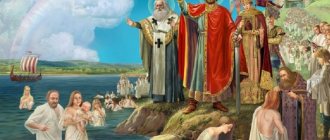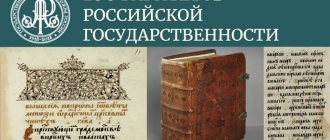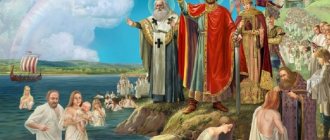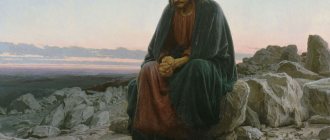The church calendar is replete with various Orthodox holidays, which are common to parishioners of any temple and all Christians. But there are special religious events, the history of which goes back to the birth of Christianity, they are celebrated only in certain churches. These are patronal annual holidays. They are eagerly awaited by parishioners and guests of the temple; they are prepared for them in the most careful way. In order to understand the significance of throne celebrations, you need to study the history of their origin and the traditions of celebrating such events in Rus' by our ancestors.
What does patronal feast mean?
The Temple of God is the habitat of the Holy Spirit, where the Lord himself and the saints are invisibly present, parts of whose incorruptible relics rest in this temple. The most sacred place in every church is the altar or chapel. This is a special table inside the altar on which the priest prepares Holy Communion. Each throne is founded in honor of a saint or feast of the Lord Jesus Christ, the Blessed Virgin Mary. The temple is usually named after the feast of the Lord, the Mother of God, or the name of the saint in whose honor the throne was founded.
The temple holiday is celebrated precisely on the day of the saint in whose honor the throne was founded. One temple may have several thrones, and then there will also be several temple celebrations. Parishioners of the temple, as well as guests who come to the celebration, usually actively participate in the celebration.
70TH ANNIVERSARY OF THE INTRONIZATION OF PATRIARCH SERGIUS
Published: 10/17/2013
Report by Ksenia Bogdanova “70th anniversary of the enthronement of Patriarch Sergius (Stragorodsky)” October 17, 2013 Participants in the conversation: Archpriest Georgy Mitrofanov and priest Alexander Mazyrin Listen - report - full recording of the meeting (part 1, part 2 - answers to questions) Professor of the St. Petersburg Theological Academy, head of the department of church history, Archpriest Georgy Mitrofanov and professor of St. Tikhon’s Orthodox Humanitarian University, doctor […]
History of appearance
The history of such celebrations goes back to the immemorial times of the Baptism of Rus'. As soon as Prince Vladimir baptized Rus', churches began to be erected everywhere and throne celebrations were celebrated.
Our ancestors loved patronal feasts very much, looked forward to them all year, prepared carefully and celebrated them with great joy. On this day, a service with a prayer service was always held in the church, after which smartly dressed church ministers and parishioners solemnly walked around the entire village with a procession of the cross, and in front they carried icons and banners. People who were lucky enough to carry shrines were called “God-Bearers”, among them were respected parishioners who were distinguished by pious lives and helped the church.
Hiking routes in the Yaransky district of tourists from school No. 5 in May and October 2005
The numbers on the map indicate settlements where patronal feasts are celebrated, well-known holidays are marked with an asterisk:
1) Midsummer's Day (July 7); 2) Bogorodskaya (September 21); 3) Cross holiday* (August 20); 4) Disadvantages* (December 31); 5) Trinity (on the 50th day after Easter), Frol and Laurus (August 31); 6) Peter's Day (July 12), Michaelmas Day (November 21); 7) Kazanskaya (July 21), Nikola (December 19); Trinity, Panteleimon (August 9), in honor of the icon of the Mother of God “Joy of All Who Sorrow” (November 6); 9) Trinity, Alexander Nevsky (September 12); 10) Honored to the Mother of God* (October 30); 11) Trinity, Cosmas and Damian (November 30); 12) Elijah’s day (August 2); 13) Trinity, Nikola (December 19); 14) Trinity, Elijah’s Day (August 2), St. Nicholas (December 19); 15) Peter's Day (July 12), Epiphany (January 19); 16) Hangover day*; 17) Peter's Day (July 12), Epiphany (January 19); 18) Trinity, Panteleimon (August 9), in honor of the icon of the Mother of God “Joy of All Who Sorrow” (November 6); 19) Kazanskaya (July 21), Dostoynaya (June 24), Nikola (December 19); 20) Trinity; 21) Nikola (May 22), Nikola (December 19); 22) Preparation (before Peter's Fast).
2) Bogorodskaya (September 21); 3) Cross holiday* (August 20); 4) Disadvantages* (December 31); 5) Trinity (on the 50th day after Easter), Frol and Laurus (August 31); 6) Peter's Day (July 12), Michaelmas Day (November 21); 7) Kazanskaya (July 21), Nikola (December 19); Trinity, Panteleimon (August 9), in honor of the icon of the Mother of God “Joy of All Who Sorrow” (November 6); 9) Trinity, Alexander Nevsky (September 12); 10) Honored to the Mother of God* (October 30); 11) Trinity, Cosmas and Damian (November 30); 12) Elijah’s day (August 2); 13) Trinity, Nikola (December 19); 14) Trinity, Elijah’s Day (August 2), St. Nicholas (December 19); 15) Peter's Day (July 12), Epiphany (January 19); 16) Hangover day*; 17) Peter's Day (July 12), Epiphany (January 19); 18) Trinity, Panteleimon (August 9), in honor of the icon of the Mother of God “Joy of All Who Sorrow” (November 6); 19) Kazanskaya (July 21), Dostoynaya (June 24), Nikola (December 19); 20) Trinity; 21) Nikola (May 22), Nikola (December 19); 22) Preparation (before Peter's Fast).
Celebration traditions
A few days before the celebration, it was customary to hold prayer services in the homes of parishioners. People prepared for this - they did general cleaning, covered the table in the courtyard with a white tablecloth and placed a ladle there for holy water. At the same time, the priest consecrated not only the home, but also the yard, stables, livestock and even the vegetable garden. The household members especially rejoiced at this event, because in this way God’s grace descended on them. The consecration ceremony ended with a festive feast.
In the temple itself, the celebration also ended with a meal. After the prayer service and religious procession, people sat down together at the tables. In addition to the parishioners of the temple, on this day it was customary to feed everyone. Therefore, people from neighboring villages gathered for the holiday. To ensure there was enough food for everyone, huge tables were set in the courtyard.
The tradition of an obligatory feast after the festive service is associated with the hospitality of the peasants, who were ready to share their joy with any passerby. The treats were prepared jointly by all the residents of the village, and together people set the tables and treated numerous guests.
Our people loved to work selflessly and to have a good rest. Therefore, the temple day smoothly turned into the temple week, which was celebrated at home. They could party and walk for 7 days. And then they just as sincerely repented in church during confession, such a feature of the Russian soul.
They could only walk for a whole week during the cold season, when the peasants were not burdened with field work.
Celebrations were often accompanied by festive trade, and gingerbread, sweets, nuts, seeds, and various types of kvass and beer were in great demand.
Glossary of terms
Eucharist
- the name of one of the most important sacraments of the Church, the celebration of which is the basis of the main peasant worship - the liturgy. During the Eucharist, bread and wine, according to the promise given by Jesus Christ at the Last Supper, are transformed into the Body and Blood of Christ for the communion of believers [18, p.48].
Choir
- a place in the temple intended for the choir. Usually the choir is located at both ends of the salt [8, p.76].
Korchazh beer
- beer prepared in a large clay vessel of large capacity.
Liturgy
(gr. - common cause) - the very ch. worship of the Christian Church. Established by Jesus Christ Himself at the Last Supper. The central point of the liturgy is the sacrament of the Eucharist, the transubstantiation of bread and wine into the Body and Blood of Christ. Currently, three versions of the liturgy are served: the Liturgy of St. John Chrysostom - served almost all year round; Liturgy of St. Basil the Great - served 10 times a year; ...the liturgy of the Presanctified Gifts, compiled by St. Gregory the Dvoeslov in the 6th century, is celebrated only during Great Lent [18, p.82].
Coming
- a church community united around one temple [18, p.48]
Solea
- the elevated part of the floor in the temple, in front of the iconostasis [18, p.132]
Church
- a temple of God, built for Christian worship, having a throne [18, p.152]
How is it celebrated nowadays?
Today, Christian traditions are actively being revived, and our lives are also not devoid of celebrating temple days. But such celebrations take place much more modestly and calmly than they were hundreds of years ago. On the day of the holiday, a solemn service is necessarily held in the church, which ends with a prayer service and a procession of the cross, but only around the temple. No one goes to the homes of parishioners anymore, and religious processions through the entire settlement are also not held.
After the service and religious procession, festive tables are set without fail, but now only on the territory of the temple. It is customary to treat everyone who comes to church that day to a meal. Just like in the old days, on this day it is supposed to feed the poor and hungry, so many people gather for the meal.
The honored guests of the parish on this day are parishioners from other churches who, together with their priests, come to share the universal joy with their brothers and sisters in Christ. Of course, it is not customary to eat meals for a whole week. The holiday lunch is limited to one meal. At the same time, it is advisable to eat as quickly as possible in order to free up space at the table for others. After the meal they go home.
Now another new tradition is being formed, which is not yet widespread everywhere, but it is practiced in big cities. This is a cultural program on the day of celebration: watching Orthodox films, performances by folk groups and much more.
Bibliography
- Berdinskikh V. History of the Vyatka region. The world of the Russian province. - Kirov: 2005. - 320 pp.: Ill.
- Berdinskikh V. Russia and Russians. - Kirov: GIPP, Vyatka: 1994. - 296 p.
- Brudnaya L.I., Gurevich Z.M. Encyclopedia of winter holidays. - St. Petersburg. Respect LLP - 1993. - 459 p.
- Vyatka Diocese. — Vyatka: 1912
- Egoshin V. Village of Lomovskoye - Church of the Intercession // Our region. - Yaransk: 2004. - No. 7 - P. 51–57.
- Ivanova A.A., Pozdeev V.A. Rituals and ritual poetry of the Vyatka region // EZV. - Kirov: Regional Writers' Organization, 1998. - T.8. — P.303–307.
- Lopatin V.V., Lopatina L.E. Small explanatory dictionary. - M.: Russian language, 1998. - 832 p.
- Maryanov I.V. Holidays, rituals, traditions. - M.: Young Guard, 1979. — 153 c.
- Nekrylova A.F. Russian agricultural calendar. All year round. - M., 1989
- Nekrylova A.F. Russian folk city holidays, entertainment and spectacles. - L.: Art, 1988. - 215 p.
- Ozhegov S.I. Dictionary of the Russian language. - M.: Russian language, 1986.
- Pankeev Ivan. Customs and traditions of the Russian people. - M.: OLMA-Press, 1999. — 536 p.
- Pozgalev V. Educational program “Origins” // Public education. - M: 2001. - No. 9.
- Rudnev V.A. Folk rituals and church rituals. - L.: Lenizdat, 1962. - 159 p.
- Rudnev V.A. Holidays, ceremonies, rituals in the work collective. - M.: Profizdat, 1984. - 153 p.
- Russians. Ed. V.A. Alexandrova.— M.: Nauka, 1999. — 858 p.
- Dictionary of the Russian language. T.3, ed. A.P. Evgenieva. - M.: Russians, 1984. - 782 p.
- Shipov Ya.A. Orthodox dictionary / Priest Yaroslav Shipov - M.: Sovremennik, 2000. - 271 p., ill.
- YARMK. Yegoshin V. Village Salobelak - Trinity Church. Manuscript. C.4
Temple holidays
TEMPLE HOLIDAYS (throne, retreat, gulev) are celebrated on the day of a saint or sacred event, in memory of which the altar of the local church was consecrated. They refer to a specific date and cover all parishioners, but at the same time they were marked by the “visiting” of relatives in families. On the day of the temple holiday, they tried to renew and refresh the decorations of the temple itself. Women finished embroidering towels, men finished artistic crafts made of wood. They prepared not only externally: many came to church the day before to confess in order to receive communion during the liturgy of the throne day. The old people told the children the life of the saint. Parishioners from distant villages invited the clergy in advance for a prayer service in the house. The youth copied the prayer to the saint, taking it from the priest’s book or from those who already had it.
On the very day of the holiday, parishioners tried to be sure to be at the service, including at the prayer service with the blessing of water that usually preceded the liturgy; stocked up on holy water. After the liturgy, everyone who could (including the elderly and children) participated in a procession around the temple, and in some cases on this day there was also a distant procession with the icon of the holiday.
The main thing in the popular perception of the temple (throne) holiday was its special holiness, closely connected with a given village, parish, or specific area. But food and entertainment also formed an indispensable part and entered into the memories of those who parted with their native places.
“The peasants had a lot of fun during the temple holidays,” concluded V.I. Semevsky, summarizing the descriptions of various counties and provinces of the 2nd half. XVIII - early years of the XIX century. They received guests who came from surrounding villages, “for which in some places the table remained set all day.”
In the description of the Tula lips. n. XIX century It is emphasized that on the temple holiday “everyone’s house is open to everyone who comes, and the table is set all day long. Every visitor is treated to a treat, even strangers.” For the treat, they stocked up meat in advance, and if the date fell during fasting, fish and other foodstuffs. Crowds walked from courtyard to courtyard, singing. The celebration usually lasted three days.
Temple holidays did not have such a special coloring inherent in these particular days, like some calendar ones, except for those cases when they coincided with the latter (a holiday for a given village could be, for example, Christmas or Trinity). But folk festive culture was represented here by ordinary constant elements. First of all, various genres of folklore. At the “guest” meetings, stories and fairy tales were told, and omens were reported. Sources mention singing and dancing as an indispensable part of the temple holiday. Musical instruments sounded: gudok (a violin with three strings), a balalaika, a gusli, a flute, a pipe, a horn (a wooden curved trumpet with six frets), and a psaltery.
The etiquette for receiving guests on temple holidays was just as common. The owner read a prayer before dinner and treated each guest. The hostess, when serving something on the table or bringing a drink, bowed low every time. When meeting guests, she kissed everyone; escorted those leaving to the gate.
During temple holidays, there was active communication between middle-aged and older peasants from different villages. Each peasant family received its guests - relatives, in-laws and acquaintances. In addition, the guests, together with the owners, according to custom, moved from hut to hut. Because of this, the temple holiday was of a communal nature, even if it was not accompanied by an eve - brotherhood or public prayer.
In Karachevsky district Oryol province. They prepared for the throne day in advance. Within a few days, the priest and the clergy began to walk around the parish - serving prayers from house to house in front of the image of the saint to whom the celebration was dedicated. In each yard they were given a loaf of bread and 5-15 kopecks. The day before, women did the cleaning and prepared holiday food, and the men stocked up food for the horses of visiting guests and chopped wood. On the day of the holiday, “it’s just getting light,” the men went to church, where the bell had already rung for morning.
A bazaar was built near the church for the holiday, but you were not supposed to enter it on your way to the service. At matins on the patronal feast day, a lot of people gathered - “there was nowhere to stand,” 2-3 people came from each courtyard. Some of the residents of the village itself, in which the church stood, invited the priest to serve a prayer service on this day - before mass, the clergy walked around the huts. After Matins, most went to the market. There, the men bought delicacies for the guests, and the wooed guys bought gifts for the brides: “whole bundles” of rolls, gingerbread cookies, nuts, sweets, sunflowers. Women and youth were simply wandering around the bazaar.
It was at this time, in anticipation of mass, that “hearty” peasants, that is, middle-aged men, gathered in groups not far from the church. They talked while smoking. Here one could meet on this day with residents of neighboring villages and exchange news. With the good news for mass, conversations stopped. Each man had to take off his hat and, crossing himself, go to church. By halfway through mass, some of the people began to leave the church; These were usually women, hurrying home to receive guests, and guys.
After the completion of the mass, the greatest revival of the bazaar began. At the same time, the youth started a round dance, and the “hearts” congratulated each other on the holiday and invited visitors to visit. Usually the owner returned from church with a guest, and 10-12 “invited” people, led by an elegant hostess, were already waiting for him at home. The newly arrived guest “prayed to the image,” then shook hands with the hostess, household members and guests. The owner seated everyone, and the meal began.
The conversation took place mainly after dinner, when the guests got up from the table and, having received a persistent invitation from the owners to stay for tea, settled in groups at the doors on the street or sat in the hut. The conversation continued over tea, after which the whole company, at the invitation of one of those present, went to another house, then to a third. Gradually the crowds of guests walking around the village thinned out. Usually the next morning, guests from neighboring villages went home, taking with them relatives and acquaintances from the village, that is, on the second day of the temple holiday they treated those with whom they had visited the day before.
A similar picture of meetings between peasants of the middle and older generation with guests from other villages during patronal holidays was described by another informant from the Oryol province, who reflected the customs of the Oryol and Karchaevsky districts, correspondents from the Kozelsky district. Kaluga province, Pskov province. and many more etc.
ON THE. Minenko, who studied the leisure of Russian peasants in Western Siberia in the 18th - 1st half. XIX century, notes: “Hosting on holidays - from October to early March (and at other times of the year) - was the most important entertainment for all village residents, especially for middle-aged and older people. “Big” holidays within the volost were celebrated in turn in all villages: a lot of surrounding people came to the “next” village “for fun” (hence the name - “moving holiday”).” Here, too, the youth separated from the elders, and the latter held conversations in their circle and entertained themselves with songs and dances. The topics of conversation with the visiting guests could be very diverse - from rumors about new duties to methods of treating horses. No wonder the Altai peasant P. Shkoldin called the congress holiday a “public forum.” The same indispensable feature of the temple holiday were congresses of guests from neighboring villages and travel from one peasant to another for three days in Eastern Siberia.
MM. Gromyko
Encyclopedic dictionary of Russian civilization. https://rus-sky.com/
What does the patronal Orthodox holiday mean and description of the temple event
The church calendar is replete with various Orthodox holidays, which are common to parishioners of any temple and all Christians. But there are special religious events, the history of which goes back to the birth of Christianity, they are celebrated only in certain churches. These are patronal annual holidays. They are eagerly awaited by parishioners and guests of the temple; they are prepared for them in the most careful way. In order to understand the significance of throne celebrations, you need to study the history of their origin and the traditions of celebrating such events in Rus' by our ancestors.
Patronal holidays in the villages of the Yaransky district
| Alexandrovskie village (n/f) | Alexander Nevsky (Sept. 12) |
| Arlamuash village | Izosima (October 10) |
| D. B. Kugusherga | Ascension (40th day after Easter) |
| D. B. Lumar | Peter's Day (July 12) |
| village B. Shuvary | Midsummer (July 7) |
| d. B. and M. Matvuevo | Trosvyatskaya February 12), Nikola (May 22) |
| D. B. and M. Shalai | Zagovene (before Peter's Fast) |
| village B.Karaksha | Nikola (May 22 and Dec. 19) |
| village Bannovo | Pokrov (Oct 14) |
| Bakhtinskiye village | Trinity (50 days after Easter) |
| Belousovo village | Trinity (50 days after Easter), Nikola (Dec. 19) |
| Vaskino village | Peter's Day (July 12), Michaelmas Day (November 21) |
| Verkhouslino village | St. Nicholas (winter), Trinity (50 days after Easter) |
| village Vinokurovo | Midsummer (July 7) |
| village Grachi | Midsummer (July 7) |
| Gusevo village | Hangover day, Zosima and Savvatiya (Oct. 10) |
| Dubnichki village | Kazanskaya (July 21–22), Trosvyatskaya (February 12) |
| village Ivanovo | Trinity (50 days after Easter), Bogorodskaya (Sept. 21) |
| Kozhinskie village | Elijah's Day (August 2) |
| Kozlovazh village | Trinity (50 days after Easter), |
| d. Komary | Peter's Day (July 12) |
| Kosogor village | Trinity (50 days after Easter) |
| village Kuguner | Transfiguration (August 19) |
| d. Erasers | Peter's Day (July 12) |
| village Lyuya | Peter's Day (July 12), Michaelmas Day (November 21) |
| D. M. Dubniki | Peter's Day (July 12), Michaelmas Day (November 21) |
| D. M. Panchino | Elijah's Day (August 2) |
| Malovitlino village | Savvaty (winter) |
| village of Mari-Ushem | Peter's Day (July 12), Epiphany (January 19) |
| village Maskichi | Kazanskaya (July 21–22), Trosvyatskaya (February 12) |
| Mironovo village | Peter's Day (July 12) |
| Mitreichi village | Frol and Laurus (August 31) |
| Mitrofanovo village | Nikola (May 22 and Dec. 19) |
| Mityushi village | Peter's Day (July 12), Michaelmas Day (November 21) |
| village Pakhtaevo | Nikola (May 22 and Dec. 19) |
| Perzha village | Trinity (50 days after Easter) |
| village of Petukhovo | Trinity (50 days after Easter) |
| Pobeknur village | Kazanskaya (July 21), |
| Pobeknur village | Kazanskaya (July 21) |
| Popovka village (n/f) | Midsummer (July 7), Intercession (Oct. 14) |
| Ryzhakovo village | Midsummer (July 7), Intercession (Oct. 14), Nikola (summer and winter) |
| Sergievskie village | Elijah's Day (August 2) |
| village Simanich | Exaltation (Sept. 27) |
| d. Simonyata (n/f) | Trinity, Bogorodskaya (Sept. 21) |
| d. Soza | Peter's Day (July 12), |
| Starokreshcheno village | Kazanskaya (July 21–22), Trosvyatskaya (February 12) |
| Tanakovo village (n/f) | Bogorodskaya (Sept. 21) |
| village of Urlum (Belskie) | Izosima (October 10) |
| village Shabalino | Kazanskaya (July 21) |
| Sharpaty village | Kazanskaya (July 21–22), Trosvyatskaya (February 12) |
| village Shuimara | Gorvyashchen (October 30), Alyony (June 3) |
| village Shulkomuchaksh | Zagovene (1 week before Trinity) |
| Shurgulets village | Kazanskaya (July 21–22), Trosvyatskaya (February 12) |
| village Shchegly | Nikola (May 22 and Dec. 19) |
| d. Engener | Zagovene (before Peter's Fast) |
| Yuley village | Worthy (June 24) |
Compiled in December 2005.
Classification by importance
According to significance, Christian holidays in 2022 are divided into:
- The Great Ones (Easter, the Twelves and the Great Ones).
- Average.
- Small ones.
Great or great holidays.
Easter or the bright Resurrection of Christ is the most important Christian event, when Christ, by His death, defeated spiritual death, opened the gates of heaven, and gave us all the opportunity to be participants in eternal bliss.
The Twelves (from the number 12) are 12 major Orthodox holidays in the Christian calendar, which reflect the most important events in the life of Christ or the Mother of God.
- Nativity of the Blessed Virgin Mary. On this holy day, Mary was born, who was destined from above to become the Mother of God.
- Exaltation of the Cross. Elevation or raising of St. Helena and St. Constantine of the Cross of the Lord for the worship and healing of those who believe in Him. They found the Holy Cross several centuries after Christ's Resurrection.
- Presentation of the Blessed Virgin Mary into the temple. I remember the day the Righteous Joachim and Anna dedicated their three-year-old daughter Mary to God. The Virgin Mary lived at the temple until she was 12 years old.
- Nativity. The birth of the Infant Christ in Bethlehem is remembered, as well as the appearance of a new star in the sky, the worship of the shepherds and wise men.
- Baptism or Epiphany. We solemnly remember the acceptance of holy baptism by the Lord at the hands of John the Baptist. The event was so great that the appearance of St. Trinity.
- Meeting of the Lord. Simeon the God-Receiver waited for the Savior to come into the world and met Him in the temple.
- Annunciation of the Blessed Virgin Mary. On this day, through the Archangel Gabriel, God informed the Virgin Mary of her great mission - to become the Mother of God.
- Entry of the Lord into Jerusalem or Palm Sunday. It is celebrated a week before Easter and speaks of the event when Christ solemnly rode into Jerusalem on a donkey. All those gathered greeted Him with shouts of “Hosanna, blessed is he who comes in the name of the Lord,” and spread their clothes and fronds (palm branches) before him. We don’t have palm trees, so believers bring decorated willow branches to churches. Hence the name of the holiday.
- Ascension of the Lord. On this day, the Lord ascended to heaven, but promised to send the Comforter to the disciples - the Holy Spirit. The next coming of Christ will be terrible: He will come to judge the living and the dead.
- Trinity or Pentecost. On this great day, when the Holy Spirit descended on the apostles, the birth of the Christian Church took place. From that moment on, Christ's disciples began to fearlessly preach about Christ throughout the world.
- Transfiguration. On the city of Tabor, Christ showed His disciples His Divine essence. He was transformed, that is, he changed before the eyes of the amazed apostles. His clothes became snow-white, a bright light emanated from the Divine Face, and He Himself stood on a cloud and talked with the Old Testament prophets Moses and Elijah. God the Father once again confirmed the Divinity of Jesus Christ.
- Dormition of the Blessed Virgin Mary. A holiday when the blessed death or dream of the Virgin Mary is remembered. Christ Himself, together with a host of angels, took Her holy soul to the heavenly abode. Subsequently, the Lord also took away the body of the Mother of God, so there is no Her grave on earth.
The great holidays include several more important events from the life of the Lord, the Most Holy Theotokos, John the Baptist, and the apostles Peter and Paul.
Twelfth holidays
In the annual church circle there are twelve holidays, called “twelve” (in Church Slavonic duodecimal). These are days dedicated to the most important events in the earthly life of Christ and the Most Holy Theotokos, as well as the most important historical events of the Church. The traditions of their celebration have developed over centuries, and today they are celebrated all over the world, and, due to their prevalence, even cover the lives of non-religious people. This is a church sermon, the glory of the name of Christ, which goes beyond the church fence.
Orthodox holidays
These days are like spiritual bright milestones of the year. Remembering this or that event, praising the Lord and the Mother of God, we rejoice in God’s love for people and again look at ourselves from the outside, trying to be worthy of this love. Believers try to confess and receive communion on the twelve feasts. The twelfth holidays are divided by content:
According to the solemnity of the service, determined by the Charter: - small, - medium, - great.
By time and date of celebration: – motionless; – mobile.
Let us note that the Holy Easter of the Lord . It is “the feast of the holidays and the celebration of celebrations.” According to comparisons of church scriptures, the twelve days are like stars, the Nativity of Christ can be compared to the moon, and Holy Easter is the Sun, without it (without the Resurrection of Christ) life is impossible, and the stars fade.
On Easter night, solemn religious processions are held in all churches, people try to come to the service at least for a short time. There are churches in which the Resurrection of Christ - Easter - and the patronal feast, Little Easter, coincide.
Temple structure
But where did the word “thronely” come from and what does it mean? In order to understand this, you need to know the structure of the temple. Any Orthodox church is divided into three parts:
- Altar part.
- The middle part of the temple.
- The narthex
The altar is the main part of the temple. Only clergy (bishop, priest and deacon) and some clergy (sacristans) can enter it. The altar contains the main Orthodox attribute - St. The throne, that is, the holy place where Christ Himself sits. On St. The great sacrament of the Eucharist is performed at the Altar, and the Holy Tabernacle contains St. Gifts of Christ.
It is known that St. The throne is the main item of church utensils. That is why the main temple holiday is called the patronal holiday. So, let's continue to understand further.
Patronal holiday - what does it mean? You can find out about this by looking at the temple icon. Usually it is located in the lower right corner of the iconostasis. Most often it can be seen on the choir, where singers sing. Sometimes a temple icon can be in an ark - in a beautiful large frame with a stand. It is known that patronal holidays in August can be the day of Transfiguration or Assumption.

